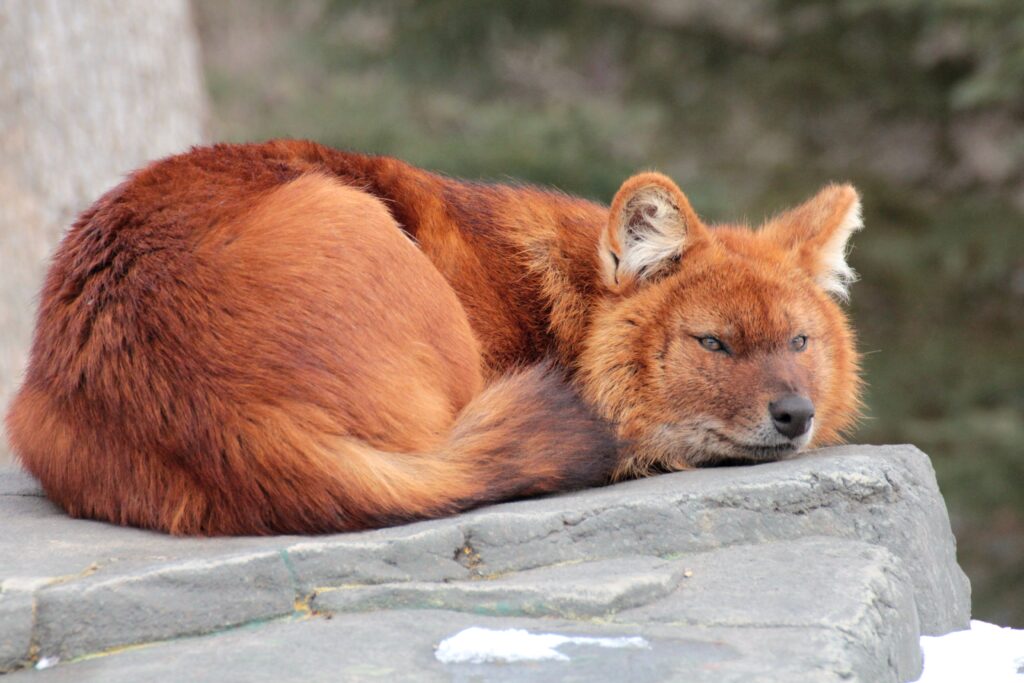
It’s the “whistling dog.” It’s the “red dog” of Rudyard Kipling’s 1894 Jungle Book. It’s a fearsome (but not really), forest-dwelling (but not entirely), highly social, pack-hunting canid that is as mysterious as its remote Asian haunts.
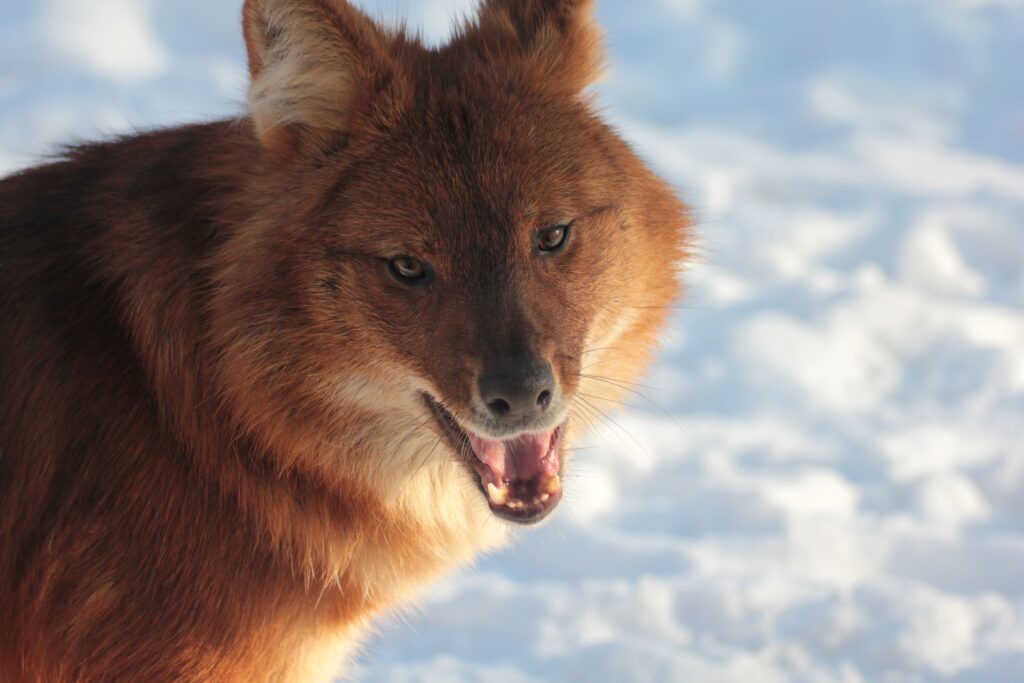
These wild dogs once ranged across the vast majority of Asia, from Russia across China into Central Asia, throughout the Himalayas and down into Southeast Asia. They are very distinctive-looking, with the northern form resembling a very large red fox, with thick reddish fur, while the southern form is very different-looking, being darker, short-haired and sleek-looking.
Despite this enormous historic range and fascinating role as a top predator, dholes have largely been ignored by the scientific and conservation community. Dholes have suffered from this anonymity – with few people paying any attention, the global population has disappeared from over 75% of its global range in the past century. While still found in small and isolated forest patches throughout Southeast Asia, the dhole was believed to have disappeared from its entire northern range.
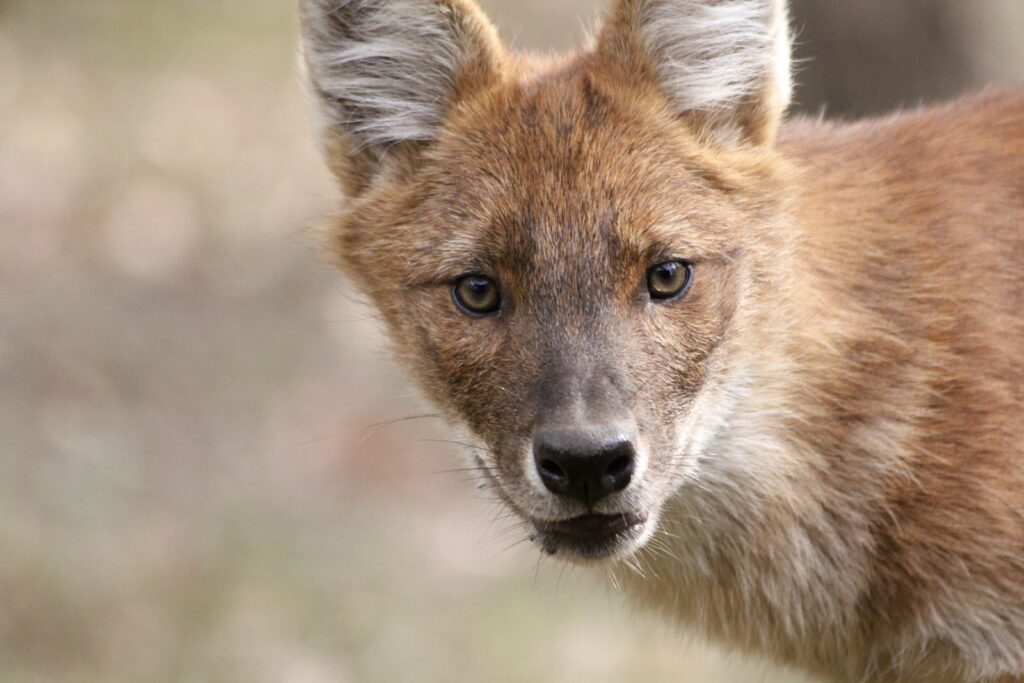
Photo credit: Tara Harris
This is one of the reasons that dholes are often considered to be ‘forest’ animals, as virtually all dholes are now found in small and often isolated tropical forest fragments across Southeast Asia. However, the northern race once roamed the high Himalayan and Tien Shan Mountains, often at or above tree line, as well as in the deciduous woodlands of northern China and the Russian Far East.
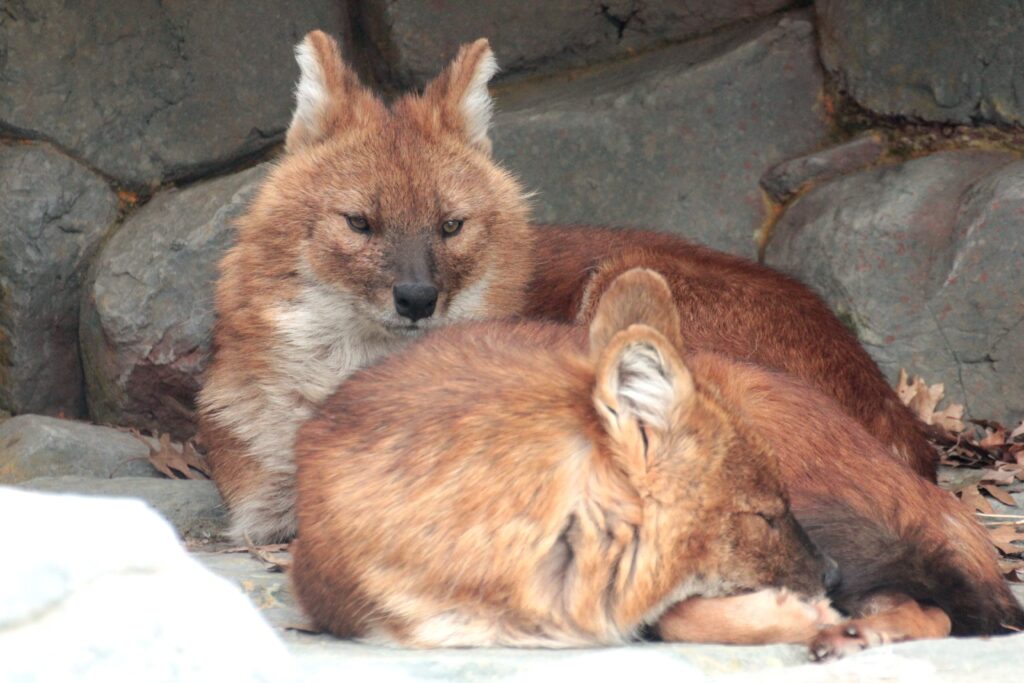
One of the biggest mysteries of the dhole, which looked to be forever unanswerable, is how dholes interacted and coexisted with gray wolves. Both were once fairly common across the northern dhole’s range, and both are pack-dwelling hunters of large prey such as deer and wild sheep. About the only significant difference that is known between the two animals is that while wolves bark and howl, dholes have a characteristic ‘whistle’ that they use as a contact call to maintain pack structure. How they otherwise differ from wolves, and many other questions about this enigmatic northern race, seemed to have vanished into the ongoing extinction crisis we face around the world.
But! Early in the 2000s, a few signs of dhole were found in the high Tibetan plains of China. Unfortunately, little effort was made to follow up on these findings, but in 2019 a snow leopard survey in northern Tajikistan found dhole signs (scat and local observations), suggesting that a few dholes might also survive in northern Tajikistan, near the Kyrgyz border.
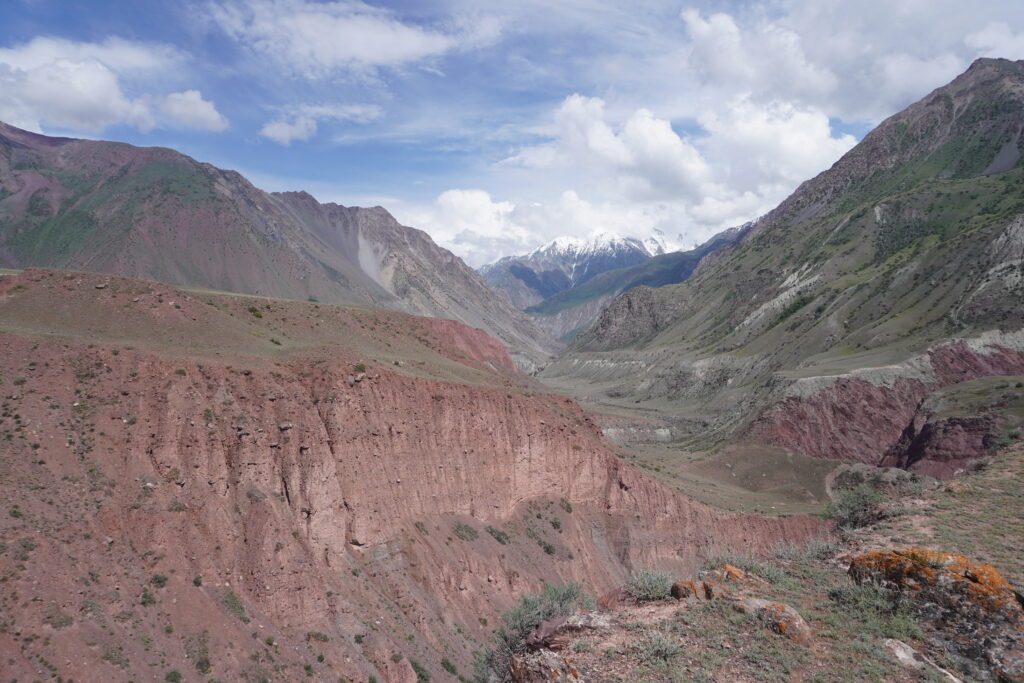
Given this exciting discovery – dholes were thought to be extinct across the Central Asian region for over 30 years! – Zoo New England is partnering with local scientists in Tajikistan, led by Dr. Kobil Shokirov, along with the Cornell University College of Veterinary Medicine to carry out a focused survey of the high Tien Shan Mountains for dholes (as well as for co-occurring snow leopards and gray wolves). This survey will look for sign and observations, including by local people, with Cornell doing genetic analyses of scat to determine if they are, indeed, from dholes.
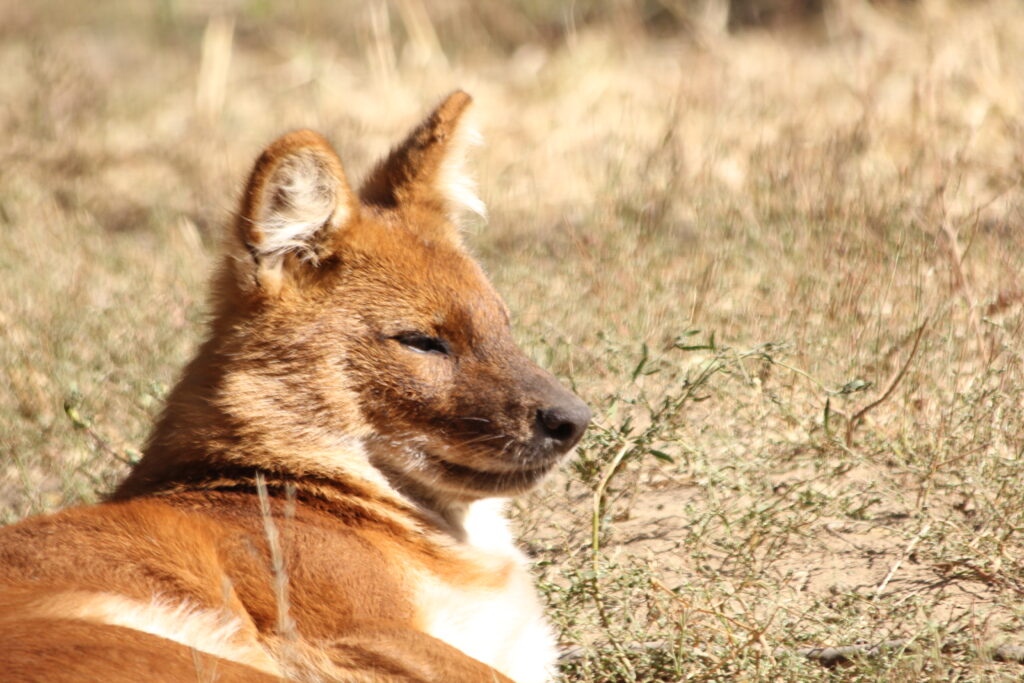
If evidence is found that a population of northern dholes still exists in these high mountains, Zoo New England will look to begin a community focused conservation initiative to help protect, preserve, and recover this tiny remnant population. Stay tuned!
